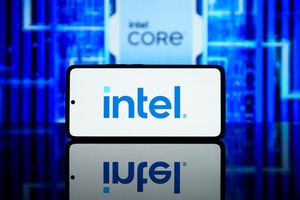
Artificial Intelligence (AI) has firmly cemented its position as the preeminent growth driver in the 2025 stock market, propelling major indices to unprecedented levels and fundamentally reshaping investment landscapes. This pervasive technological force is not merely enhancing existing industries; it is creating entirely new paradigms, particularly in the demand for advanced semiconductors and expansive cloud computing infrastructure. The relentless pursuit of AI capabilities by corporations globally is fueling a surge in capital expenditure, signaling a profound and lasting transformation of market dynamics. As companies race to integrate AI into their core operations, the market is witnessing both explosive growth for key enablers and significant challenges for those unable to keep pace.
The AI Inflection Point: Why 2025 Marks a New Era of Growth
The year 2025 stands as a critical inflection point, where AI's computational demands have irrevocably established advanced chips and scalable cloud infrastructure as indispensable foundations for technological progress. The global AI market, valued at approximately $391 billion in 2025, is projected to quintuple over the next five years, growing at a staggering compound annual growth rate (CAGR) of 35.9% through 2030. This growth rate surpasses previous tech booms, underscoring AI's unparalleled impact. The U.S. stock market has shattered records in Q3 2025, with major indices like the S&P 500 surpassing 6,500 points, largely driven by the "Magnificent Seven" tech stocks heavily invested in AI.
This surge is attributed to the insatiable demand for processing power required by increasingly complex AI models, especially generative AI and large language models (LLMs). These models require specialized hardware capable of immense parallel processing and high memory bandwidth. Graphics Processing Units (GPUs) remain the bedrock of AI acceleration, leading to unprecedented demand for companies like NVIDIA (NASDAQ: NVDA). Their Blackwell architecture, launched with immense fanfare, reportedly saw its entire 2025 production sold out by November 2024, demonstrating the urgency of compute acquisition.
Cloud computing providers are equally critical, offering the scalable, flexible, and robust infrastructure necessary to train, deploy, and run these massive AI models. Global spending on cloud computing is projected to increase at a 21.2% CAGR from 2024 to 2030, with generative AI spearheading this expansion. Hyperscalers are investing tens of billions of dollars into expanding their data center capabilities, transforming them into "AI fortresses" to meet escalating enterprise demand for GPU-as-a-Service and specialized AI/ML platforms. The current market focus is on the "infrastructure phase" of AI, where securing vast computing power and capacity planning are paramount, epitomized by multi-billion-dollar deals for AI infrastructure.
The AI Gold Rush: Who's Striking It Rich and Who's Digging Their Own Grave
The AI revolution in 2025 has drawn a clear line between the companies providing the essential "picks and shovels" for this new era and those struggling to adapt or differentiate.
The Frontrunners (Winners):
1. Advanced Chip Manufacturers: Companies designing and manufacturing specialized AI chips are experiencing unprecedented demand.
- NVIDIA (NASDAQ: NVDA): Remains the undisputed champion, with its data center revenue surging 73% in fiscal year 2025 to $39.1 billion, and total revenue reaching $130.5 billion, a 114% year-over-year increase. Its CUDA software platform creates a formidable ecosystem, cementing its 92-94% market share for data center GPUs. Its market capitalization briefly touched $4 trillion in July 2025.
- Broadcom Inc. (NASDAQ: AVGO): Has emerged as a formidable player by designing custom application-specific integrated circuits (ASICs) for hyperscalers. The company reported strong Q3 2025 results driven by AI demand, with revenue from these products expected to hit $12 billion by year-end. Broadcom's market capitalization reached $1.6 trillion.
- Advanced Micro Devices (NASDAQ: AMD): A strong competitor with its Instinct MI series AI GPU accelerators and Zen CPU architectures. AMD's Q4 2024 revenue increased by 24% to $7.7 billion, driven by its data center and client segments, and it's leveraging AI in its own chip design and manufacturing.
- Taiwan Semiconductor Manufacturing Company (NYSE: TSM): As the world's leading pure-play foundry, TSMC benefits immensely from the demand for advanced AI chips, manufacturing for NVIDIA and AMD. AI is also revolutionizing its manufacturing processes, increasing yields.
- Memory Manufacturers (SK Hynix, Micron Technology (NASDAQ: MU)): These companies are cashing in on the growing demand for High-Bandwidth Memory (HBM), crucial for advanced AI workloads. SK Hynix (up 74.54%) and Micron Technology (up 44.79%) were among the top-performing stocks in early 2025 due to their HBM story.
2. Cloud Computing Giants: Providers of scalable infrastructure and specialized AI services are indispensable.
- Microsoft (NASDAQ: MSFT): Its Azure cloud services are a dominant force, with AI contributions driving significant growth. Azure's revenue jumped an impressive 39% year-over-year in Q4 fiscal year 2025. Microsoft's multi-billion dollar commitment to OpenAI and the integration of GPT-4 into Azure OpenAI Service have been instrumental, with the company investing approximately $80 billion globally in AI-enabled data centers in fiscal year 2025.
- Alphabet (NASDAQ: GOOGL) (Google Cloud):M Google Cloud's Q2 2025 revenue surged 32% year-over-year to $13.6 billion, fueled by its aggressive focus on AI infrastructure and generative AI solutions like Vertex AI. Google is increasing its 2025 capital expenditure guidance to $85 billion, with two-thirds earmarked for servers and data center construction for AI.
- Amazon (NASDAQ: AMZN) (Amazon Web Services - AWS): While still the largest global cloud infrastructure provider, AWS's revenue growth of approximately 17% in Q2 2025 lagged behind Azure and Google Cloud. AWS is expanding its infrastructure, but faces a reported $195 billion backlog of unfulfilled customer orders due to supply chain and hardware limitations, leading to more modest stock growth for Amazon (5.5% year-to-date in 2025).
3. AI-Driven Software & Data Analytics:
- Palantir Technologies (NYSE: PLTR): Its Artificial Intelligence Platform (AIP) helps large organizations integrate AI models. Palantir's Q4 2024 results showed a revenue increase of 36% year-on-year to $828 million, with shares up 74.69% in early 2025.
The Strugglers (Losers):
1. Legacy Software Providers and Non-Adaptive Businesses: Companies clinging to outdated systems and failing to integrate AI risk obsolescence. Legacy infrastructure struggles under AI demands, and organizations unprepared for data quality and integration challenges are losing out to AI-native or AI-enhanced competitors.
2. Companies Struggling in the AI Chip Market or with AI Adoption Barriers:
- Intel (NASDAQ: INTC): Despite being a major player, Intel has faced significant challenges in the AI chip market. Its brand value declined by 33% to $14.3 billion in 2025, and it reportedly decided not to bring its Falcon Shores AI chip to market, impacting its stock performance.
- Marvell Technology (NASDAQ: MRVL): Provided an underwhelming outlook for its fiscal first quarter in early 2025, with sales and profit forecasts in line with expectations, but falling short of higher AI-driven growth anticipated by analysts. Marvell shares tumbled almost 20% in March 2025.
- Rekor Systems Inc. (NASDAQ: REKR) & TROOPS Inc (NASDAQ: TROO): These smaller AI-related companies posted disappointing quarterly results, with Rekor Systems' revenue falling short by 25% and TROOPS Inc facing profitability issues due to intense competition, leading to negative stock performance.
3. Companies with Overvalued AI Narratives or Struggling Core Businesses:
- Tesla (NASDAQ: TSLA): While positioning itself as an AI company with investments in its Dojo AI supercomputer, CEO Elon Musk has called Dojo a "long shot." Its automotive business, representing 77% of sales, is struggling with stagnating demand. Tesla's forward price-to-earnings (P/E) ratio of 127, nearly four times the Nasdaq-100 average, makes it appear significantly overvalued given uncertainties in its AI transition and core business struggles.
Reshaping the Global Economy: Industry Impact and Broader Implications
AI's dominance in 2025 is not just a market phenomenon; it's a foundational shift that is reshaping industries, fostering new competitive dynamics, and driving an urgent global conversation around regulation and ethics.
Broader Industry Trends and Ripple Effects: AI's influence is pervasive, extending beyond technology to revolutionize virtually every sector. Financial services leverage generative AI for fraud detection and risk management, healthcare for administrative efficiencies, retail for personalized experiences, manufacturing for production optimization, and media/entertainment for content personalization. This widespread adoption stems from AI's unparalleled ability to analyze data, identify patterns, automate tasks, and make predictions, leading to smarter, faster business decisions. The result is a "wage premium" for AI skills and higher revenue per employee in AI-exposed industries.
The scramble for AI integration has intensified competition, with companies rapidly deploying AI gaining significant advantages. This has led to an explosion in strategic partnerships, exemplified by hyperscalers seeking custom silicon from companies like Broadcom (NASDAQ: AVGO) to diversify chip supply and reduce reliance on single dominant players. Microsoft's (NASDAQ: MSFT) substantial investment in OpenAI grants it exclusive cloud rights and preferential access to advanced AI models, highlighting the critical nature of these alliances. However, this also raises concerns about market concentration, especially as AI becomes integrated into critical infrastructure, prompting antitrust scrutiny over algorithmic pricing and potential collusion.
Regulatory and Policy Implications: The rapid advancement of AI has triggered a global wave of regulatory action. The European Union's AI Act, the first comprehensive legal framework globally, began its phased implementation in 2025, with prohibitions on unacceptable-risk AI systems (e.g., social scoring, real-time biometric identification) becoming effective in February 2025. Rules for general-purpose AI (GPAI) models, including transparency and copyright requirements, followed in August 2025.
In the United States, a multi-layered approach combines federal executive orders with pioneering state legislation. "America's AI Action Plan," released in July 2025, aims to accelerate innovation while removing regulatory barriers. However, an earlier executive order in January 2025 prioritized economic competitiveness over some safety measures. States are active, with California enacting laws effective January 2026 mandating disclosure of generative AI interactions, and Montana's "Right to Compute" law setting requirements for AI-controlled critical infrastructure. Antitrust concerns surrounding AI are growing, particularly regarding algorithmic pricing and the potential for autonomous AI agents to engage in collusive behaviors. Ethical AI frameworks focusing on fairness, transparency, privacy, and accountability are becoming paramount, with a strong trend towards explainability standards and privacy-first AI development.
Historical Precedents and Comparisons: The current AI boom is often compared to the dot-com bubble of the late 1990s and the Industrial Revolution. While the exuberance in AI stock valuations echoes the dot-com era, many experts argue the AI boom is more fundamentally robust. Unlike many dot-com companies that lacked viable business models, leading AI companies in 2025 are demonstrating significant earnings (e.g., Anthropic's revenue surged to $4.5 billion in mid-2025) and are deeply integrated into critical workflows. The current surge is underpinned by mature technological infrastructure and widespread, tangible adoption across diverse industries. However, cautions persist regarding elevated valuations and the significant market concentration in a few large AI-centric tech stocks, with some economists warning of potential "overinvestment busts" if capital spending proves unsustainable.
More profoundly, AI is seen as one of the most significant innovations since the Industrial Revolution. Just as industrialization mechanized physical labor, AI is automating cognitive work, fundamentally reshaping job roles, industry structures, and pathways for economic growth. This is driven by "AI-native" firms aiming to displace entire industries, signifying a profound structural transformation in how economies are organized and value is created.
The AI Frontier: What Comes Next
The trajectory of AI's dominance in the stock market suggests a future characterized by both transformative opportunities and complex challenges, requiring strategic adaptation from all stakeholders.
Short-Term and Long-Term Possibilities: In the short term (remainder of 2025), AI will continue to refine algorithmic trading, enabling sophisticated data analysis and personalized investment tools. AI-driven systems, like those used by XTX Markets, will maintain an edge by processing vast market data and executing trades at unprecedented speeds. This will also intensify AI's role in sentiment analysis, reducing human bias. For the long term (3-5 years and beyond), AI is poised to redefine investment strategies, generating trillions in value for financial firms through enhanced deal sourcing, identification of hidden market trends, and efficient access to sophisticated techniques. This could lead to a "democratization" of AI trading tools, leveling the playing field for individual investors.
Strategic Pivots and Adaptations: Companies must embrace strategic pivots:
- Algorithmic Trading & Automation: Financial institutions must adopt more sophisticated algorithmic trading and automated decision-making.
- Enhanced Data Management: Investing in robust data governance, cloud computing, and scalable processing is crucial for high-quality AI insights.
- Explainable AI (XAI): Developing transparent AI models is essential for regulatory compliance and building trust, addressing the "black-box problem."
- Workforce Reskilling: While AI automates many tasks, human oversight and specialized skills remain vital. Employees must be trained on ethical AI and collaboration with AI systems.
- Cybersecurity & Risk Management: Increased reliance on AI demands robust data protection, continuous monitoring for anomalies, and leveraging AI itself for fraud detection.
- Regulatory Compliance: Close alignment with evolving AI regulations is critical, especially regarding data privacy, algorithmic bias, and accountability.
Emerging Market Opportunities and Challenges: Emerging markets represent a significant opportunity, rapidly shifting to become active participants in the global AI revolution. Their AI-related stocks have, in some instances, outperformed even the "Magnificent Seven" mega-cap tech firms, with this trend predicted to continue for decades. AI promises to inject trillions into the global economy through unprecedented efficiency and new revenue streams. However, these markets face challenges in data quality, regulatory uncertainty, high implementation costs, a talent gap, and legacy infrastructure, which could hinder AI adoption for smaller institutions.
Potential Scenarios and Outcomes:
- Increased Market Efficiency: AI's rapid information processing could lead to deeper, more liquid, and efficient markets.
- Heightened Volatility: Widespread adoption of similar AI models could lead to "herding" behavior, amplifying market reactions and increasing volatility, similar to "flash crashes" seen in cryptocurrency markets.
- Market Concentration: AI might further concentrate investment in hedge funds and proprietary trading firms, potentially reducing market transparency and increasing systemic risks if a few providers fail.
- Evolving Human Roles: Human traders will pivot towards long-term investing, creative alpha generation, and managing unforeseen events, fostering a hybrid human-AI collaboration.
- Intensified Scrutiny: Concerns around algorithmic bias, data privacy, accountability, and market manipulation will escalate, demanding enhanced regulatory oversight.
- AI Bubbles: While the current boom is underpinned by significant funding and earnings, questions about "bubble" dynamics and the sustainability of current share prices persist. Some analyses suggest a potential "AI bubble crush" in 2025 if hype outpaces real-world returns.
Conclusion: Navigating the AI-Driven Future
The impact of AI on the 2025 stock market is undeniable, marking a period of profound transformation that continues to unfold. AI is firmly established as the dominant driver of growth, radically reshaping demand for advanced chips, cloud computing, and overall market dynamics. Key takeaways include the unprecedented revenue growth for chip manufacturers like NVIDIA (NASDAQ: NVDA) and cloud giants like Microsoft (NASDAQ: MSFT), the rapid adoption of AI across all industries, and the accelerating pace of global AI regulation.
Moving forward, the market will continue to be bifurcated: "AI winners" are those companies deeply embedded in providing the foundational technology or adeptly integrating AI into their core operations, while "AI losers" are those failing to adapt, struggling with legacy systems, or caught in the wake of intense competition. Investors should keenly watch for sustained earnings growth from AI-centric companies, the practical implementation of AI solutions beyond pilot phases, and the development of clear ROI from AI investments across various sectors. The regulatory landscape, particularly regarding ethical AI and potential antitrust implications, will also be a critical factor influencing market sentiment and company strategies.
Ultimately, AI promises to inject trillions of dollars into the global economy, but its trajectory will require continuous vigilance, strategic foresight, and a commitment to responsible innovation to navigate the opportunities and challenges of this new technological frontier.





